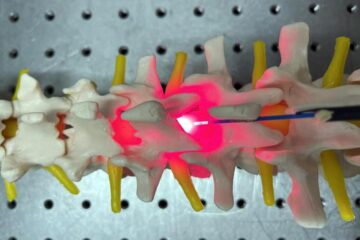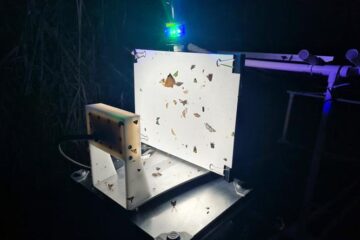Masters of disguise: secrets of nature's 'great pretenders' revealed

The mocker swallowtail butterfly, Papilio dardanus, is unusual because it emerges from its chrysalis with one of a large number of different possible wing patterns and colours. This is different from most butterfly species which are identified by a common wing pattern and colour. Furthermore, some of the different patterns that the mocker swallowtail exhibits mimic those of poisonous species, which affords this harmless insect a valuable disguise which scares off predators.
Biologists are interested in finding out exactly how wing pattern isdetermined in the mocker swallowtail, because they believe thatunderstanding how these different mimic patterns evolved may shed newlight on whether such evolutionary changes occur in small gradual steps, or sudden leaps.
In the 1950s scientists realised there must be a genetic 'switch' controlling which of the numerous possible wing patterns is expressed in each individual mocker swallowtail, but until now the location and identity of the genes involved have remained a mystery.
The new study, published in Proceedings of the Royal Society B, shows how a team of biologists used molecular tags and DNA sequencing in order to pinpoint the part of its genetic code that determines wing pattern and colour. Their study suggests that a developmental gene called 'invected', which was already known to be involved in the early embryonic development of butterflies, is behind the allocation of different wing patterns in mocker swallowtails.
Professor Alfried Vogler of Imperial College London's Department of Life Sciences and the Natural History Museum, one of the authors on the paper, explains, however, that further investigation is needed to figure out exactly how this gene works.
“We've taken a big step here towards identifying exactly how this fascinating insect species is endowed with such a wide variety of extremely useful wing patterns. However, identifying the area of the genome involved in this process is just the first step – we now need to look in more detail at the differences in the invected gene, and another gene located next to it, to find out exactly how they produce the different forms,” he said.
He goes on to emphasise the significance of studying the mocker swallowtail, saying: “You could argue that there would be little point in a species which slowly evolved to mimic a poisonous butterfly over the course of generations – the disguise is only useful if full and complete. This could suggest the possibility of sudden leaps in evolution occurring in this species, which would be an incredibly exciting discovery – by studying the changes in gene sequences we will find out if this happened or not.”
The mocker swallowtail is found in sub-Saharan Africa and has a wingspan of between three-and-a-half, and four-and-a-quarter inches. Only females of the species exhibit the wing patterns that mimic other butterflies. All the males are yellow, with black markings and have the typical tails of most swallowtail butterflies.
Media Contact
More Information:
http://www.imperial.ac.ukAll latest news from the category: Life Sciences and Chemistry
Articles and reports from the Life Sciences and chemistry area deal with applied and basic research into modern biology, chemistry and human medicine.
Valuable information can be found on a range of life sciences fields including bacteriology, biochemistry, bionics, bioinformatics, biophysics, biotechnology, genetics, geobotany, human biology, marine biology, microbiology, molecular biology, cellular biology, zoology, bioinorganic chemistry, microchemistry and environmental chemistry.
Newest articles

Red light therapy for repairing spinal cord injury passes milestone
Patients with spinal cord injury (SCI) could benefit from a future treatment to repair nerve connections using red and near-infrared light. The method, invented by scientists at the University of…

Insect research is revolutionized by technology
New technologies can revolutionise insect research and environmental monitoring. By using DNA, images, sounds and flight patterns analysed by AI, it’s possible to gain new insights into the world of…

X-ray satellite XMM-newton sees ‘space clover’ in a new light
Astronomers have discovered enormous circular radio features of unknown origin around some galaxies. Now, new observations of one dubbed the Cloverleaf suggest it was created by clashing groups of galaxies….





















